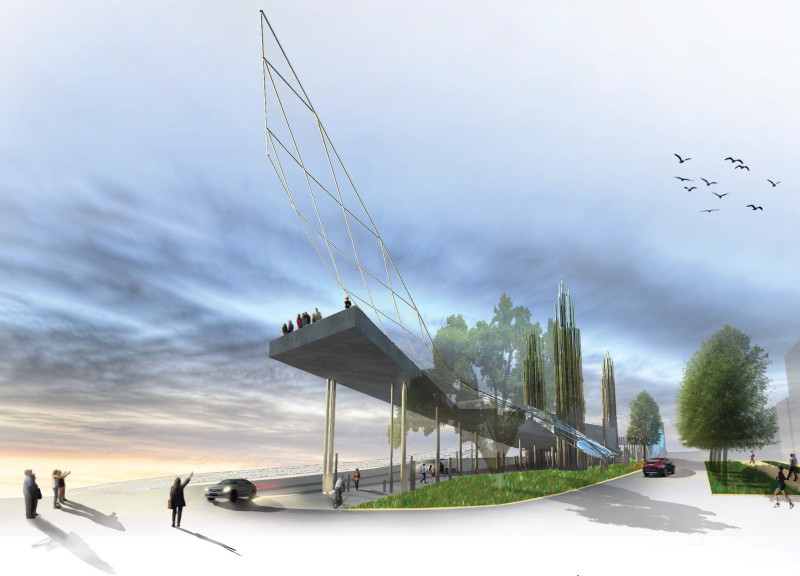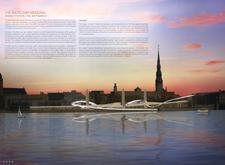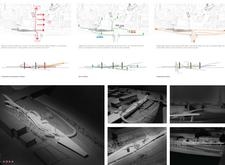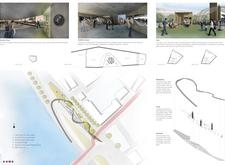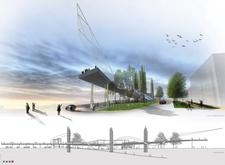5 key facts about this project
### Overview
The Baltic Way Memorial is situated along the waterfront within an urban context that highlights its historical significance. It commemorates the August 23, 1989 event wherein approximately two million individuals formed a human chain across the Baltic States—Estonia, Latvia, and Lithuania—as an act of unity against oppression. The design strategically incorporates themes of authority, unity, and resistance, reflecting the collective journey toward independence.
### Spatial Relationships and Interaction
The memorial's layout fosters an environment conducive to reflection and community engagement. The design includes pedestrian bridges that ensure safe access across various areas, enhancing circulation within the site. Landscaping elements create inviting green spaces that encourage gatherings and contemplation, emphasizing the memorial's connection to its historical narrative. The adaptable spatial qualities allow visitors to experience the significance of the memorial while engaging in dialogue.
### Materiality and Function
Materials were selected to reinforce the memorial's themes and enhance its aesthetic. The predominant use of concrete in the plinth conveys permanence and strength, serving as a stark reminder of the oppressive past. Glass features within the unity and resistance components introduce transparency and lightness, symbolizing hope. Steel elements provide structural flexibility while echoing industrial influences relevant to the region. Additionally, the design incorporates various programmatic spaces, such as exhibition areas, cafés, and a souvenir shop, to enhance visitor experience and promote educational engagement with the memorial's context.


